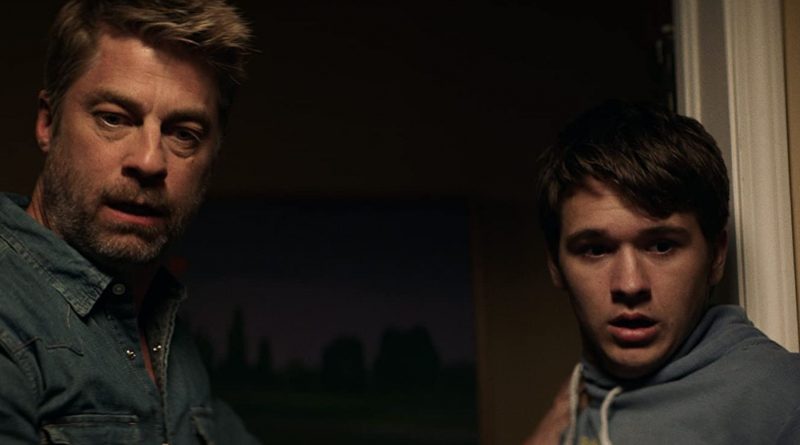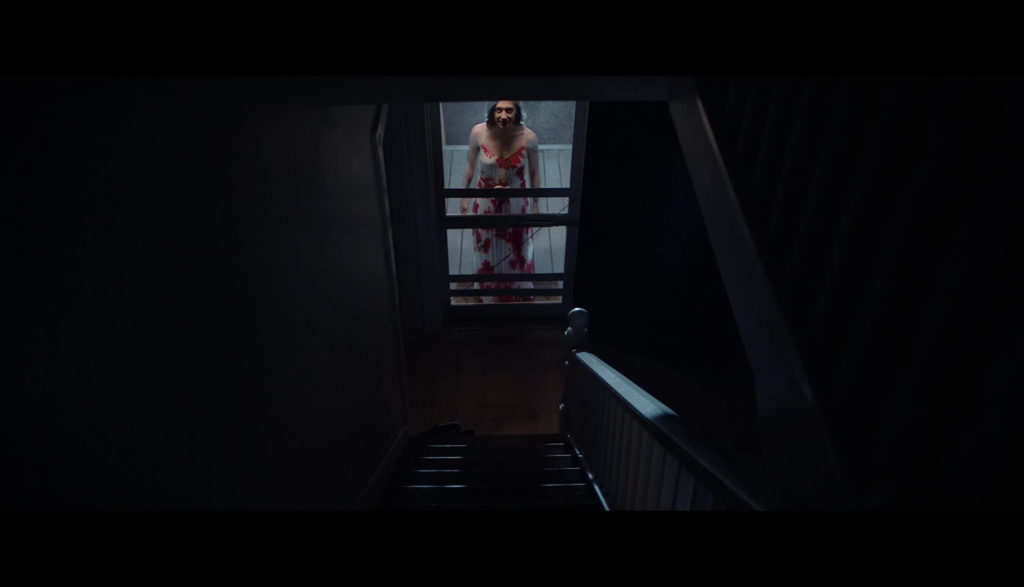There have been a lot of excellent horror films lately, and as a rising tide lifts all boats, even an average horror film today can be expected to attain to a basic level of competence, even if it fails to push the envelope like the genre’s best examples. That is The Wretched. It’s pretty watchable and well-made in most respects. But it is an example of the formulaic supernatural horror which has risen to prominence now that slasher movies are passé (perhaps because the perverse desire to watch human beings doing horrible things to each other is now being adequately met by true crime serials).
The main problem with The Wretched is structural. It tells the story of a teenage boy, Ben (John-Paul Howard), who comes to live with his father (Jamison Jones) for the summer to work on a marina during his parents’ divorce. He clashes with his father and has a fleeting romance. As a sub-plot, the film also features a witch who eats children. This witch supplants the hipster mother next door and takes control of her husband. She has designs on the woman’s young son, and the younger sister of Ben’s love interest, Mallory (Piper Curda). The issue is that these two stories have no organic connection, and the inertia of the first story drags down the second.
You see this a lot in contemporary horror. Before horror movies were popularised as truly mainstream entertainment—made suitable for Netflix, in other words—filmmakers didn’t mess around so much framing their stories with teenage angst or family drama. All of that extra space was usually filled up with gore, or sometimes comedy. This didn’t lead to better movies for the most part, but there is something uniquely dull about watching what is really a clumsy drama interspersed with some workmanlike horror routines.
At the risk of being unfair to The Wretched, it can be unfavourably compared to two truly excellent horror films of the last decade, Hereditary and It Follows. Hereditary is also about family, but it successfully marries family dynamics with supernatural horror to tell a nightmarish story. It Follows, by comparison, does not bother with drama. It sticks to its central conceit with ruthless determination; the film is notable for featuring almost no adults at all. It is much more frightening for the characters to be totally exposed, without grown-up protection.
But if you were to remove the figure of the witch from The Wretched, you would still have a coherent, albeit deeply boring movie. The witch has no relevance to the characters’ inner lives; she doesn’t represent anything about Ben’s family situation, or the anomie and apathy of being an adolescent. The small town setting is vague and arbitrary as well—it feels like the 90s, but at one point a character mentions watching Netflix. Sometimes the film seems to be reaching for a Stranger Things-style nostalgia, without ever really committing to it.
The horror scenes themselves are predictable, beat for beat. The monster design of the witch could have been drawn from any number of recent video games. Worst of all, the movie uses the unbelievably lazy screenwriting technique of having a character Google the monster so they can learn all about its appetites and weaknesses via montage.
There is one effective hook in the movie. After the boy next door disappears, Ben goes to speak to his father, who denies angrily that he has a son. It’s a creepy moment, but it comes at the midpoint of the movie, by which point the weight of the protracted dramatic scenes is simply too great to overcome. The chaotic climax is exhausting more than anything.
It’s a pity; witches are archetypically scary. The childhood fear of being snatched away and eaten by a distorted maternal figure is still very potent. But The Wretched dilutes its subject matter beyond recognition with suburban banality. A sequel is probably to be expected.


